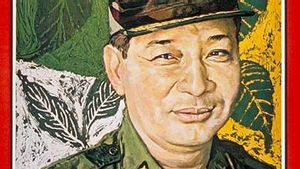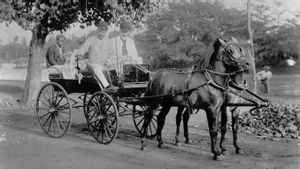JAKARTA – Today's history, 104 years ago, July 18, 1918, the Spanish Flu epidemic began to spread to various parts of the Nusantara. This indication appears in connection with the news in the newspaper Bataviaasch Nieuusblad entitled: De Epidemie.
The contents explained that the Spanish Flu had spread throughout the Nusantara and asked the authorities to be vigilant. Moreover, the Spanish Flu has not found a cure. However, that does not mean the transmission of the Spanish Flu can not be prevented. The colonial government urged people to keep their distance.
The presence of a new type of influenza virus (later known as the Spanish Flu) was underestimated. In fact, since the earliest case, the Spanish Flu was found at the military training site Camp Funston, Kansas, United States (US).
The Spanish Flu outbreak was considered harmless by local doctors since March 5, 1918. It was like the common cold, they said. That assumption is in fact a big mistake. The influenza virus suffered by the soldiers at Camp Funston was indicated to be more virulent and rapidly spread. The proof, at the end of March 1,000 US troops contracted the Spanish Flu. Of these, 38 people died.

The death toll was considered low by Camp Funston authorities. Those who were deemed cured were immediately conditioned to defend the country in World War I. The high mobilization of the US army was not only able to secure the allied bloc from the central block's attacks, but also brought other calamities. Namely, Spanish Flu.
The influenza virus spread quickly throughout Europe, then the world. The Asian continent was also made nervous because of the high death rate from the Spanish Flu. Slowly, the Spanish Flu began to enter the Dutch East Indies (now: Indonesia). All of this was due to the neglect of the Dutch East Indies colonial government.
“In April 1918, after careful observation, the Dutch consul in Singapore gave a warning to the Dutch East Indies government in Batavia to prevent ships from Hong Kong from docking at the Batavia pier and unloading passengers there. This is due to the fact that Hong Kong has been declared infected by influenza and the British Government in Singapore has also issued a ban for the ships to disembark.”
“Unless only applicable and all passengers are examined by a doctor who has been appointed by the UK Government. The government of Batavia did not pay much attention to this warning, except only by taking preventive measures, namely tightening supervision of ships coming from Hong Kong, especially after transiting in Singapore," said Arie Rukmantara et al in the book Yang Terlupakan: Pandemi Influenza 1918 di Hindia-Belanda (2019).

The Dutch East Indies colonial government ignored the sign of the entry of the Spanish Flu. The ignorance of the Dutch is like a doctor at Camp Funston. The owner of the power underestimated the Spanish Flu which is considered the common cold.
The narrative is predictable. The Spanish Flu is suspected to have entered Indonesia since April 1918. Three months later, the Spanish Flu is predicted to have spread throughout the country. The indication was reported by the newspaper Bataviaasch Nieuusblad on July 18, 1918.
“The term Spanish flu came into use in the article De Epidemie published in Bataviaasch Nieuusblad on July 18, 1918. This article reported that the Spanish flu had spread among hundreds of members of the Dutch battalion in Batavia. The Civil Health Service has also received reports of the outbreak of a similar disease on the east coast of Sumatra and in Surabaya.”
"This disease is said to be related to a pandemic that is attacking the whole world and has not found a cure. The article is accompanied by an appeal to prevent the spread of disease by immediately leaving work and isolating yourself if you have a fever accompanied by mucus discharge. If you cough or sneeze, stay away from people and don't spit on the ground!” closed the Moyang Kasih Dewi Merdeka in her writing in Tempo Magazine entitled 1918-1919: Seperti Rumput Kering yang Tersulut Api (2020).
Thus, the occurrence of the Spanish Flu which became an epidemic in the Nusantara on July 18, 1918, became today's history.
SEE ALSO:
The English, Chinese, Japanese, Arabic, and French versions are automatically generated by the AI. So there may still be inaccuracies in translating, please always see Indonesian as our main language. (system supported by DigitalSiber.id)














